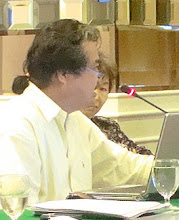
The Iraya
The term iraya is said mean "man" or "human being". The Irayas are the Mangyans of Mindoro who occupy the northwestern part of Mindoro Island. The estimated population of the Iraya-Mangyan is 10,689 distributed in around 141 settlements in the municipalities of Abra de Hog, Mamburao, and Paluan (OSCC, IV, 1993).
Accordins to the Iraya customs and traditions, the family is considered as the basic unit of production and consumption. Their kindred system is traced to both the father and mothers links which their system refers to as guraan. The nuclear family is referred to as talnakan wherein there already exists a social order. The eldest takes the place of the parents during their absence and is considered the second parent. He/She is likewise considered as the intermediary between the parents and the younger siblings.
Among the Iraya, leadership is provided by the puon-balayan, in the local group referred to as sanguraan composed of closely related families. Moral and legal problems are referred to the puon-balayan for decision. Any criminal act or offense done is corrected with the use of either the pangaw or tige. Pangaw is the Irayas version of a detention cell. Tige on the other hand is a punishment wherein the suspects of a particular offense are called and are ordered to immerse their right hand in a pot of boiling water to pick the white stone at the bottom of the pot. Any one of the suspects whose right hand gets burned is considered to be the guilty party. It is believed that the innocent parties will not get burned in this particular test because Apo Iraya will protect them from harm.
http://www.ncip.gov.ph/resources/ethno_detail.php?ethnoid=73


